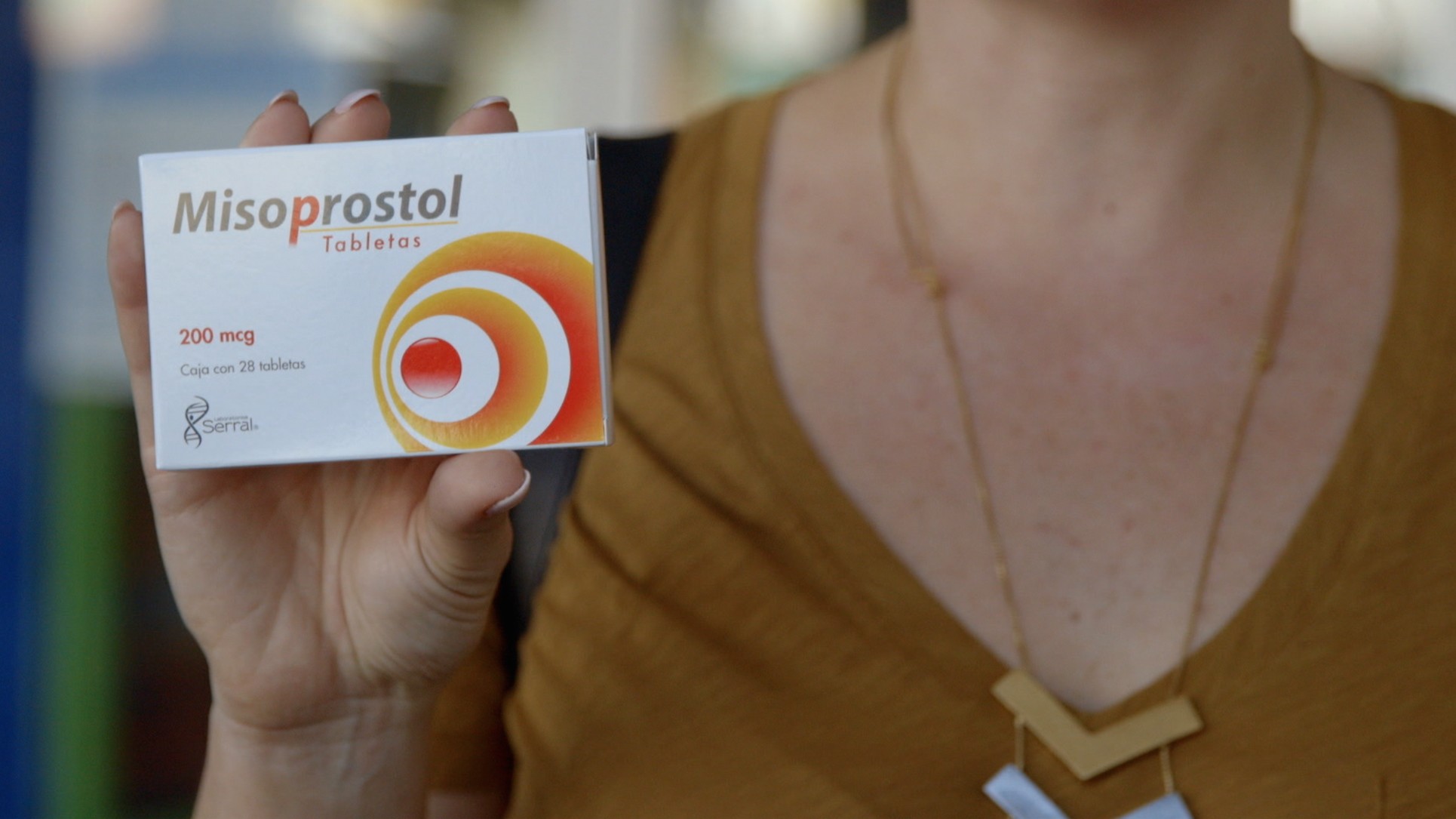Photo by Natalie Jeffcott via Stocksy
Menstrual products have always had an air of secrecy about them. Tampons, especially, have always been advertised for their tininess and discretion. Who can forget the classic early aughts Tampax commercial where a teacher confiscates a tampon from a student? Thinking it's candy, the unwitting teacher says, "Well, I hope you brought enough for everyone." Tampax: a product so innocuous in its packaging that men will think it's candy!Before tampons, women's only option for soaking up periods were large cloth pads. These pads were held in place with huge, cumbersome belts. Sometimes additional rubber bloomers or sanitary aprons were layered on top, so any blood that leaked from the pad wouldn't stain your clothing. Rubber underwear and giant belted pads didn't fit under the breezy new fashions of the 1920's. The New Woman needed a menstrual aid that let her do all the activities now open to women, like tennis and voting.Haas's applicator was designed to prevent women from having to touch themselves down there while inserting the tampon. Still, many doctors and clergy worried the tampon would become a masturbatory aid, or even tear the hymen and rob women of their virginities. In 1944, the archbishop of Dublin, John Charles McQuaid, wrote to the Minister of Local Government and Public Health warning him of the dangers of tampons. "On the medical evidence made available, the bishops very strongly disapproved of the use of these appliances, more particularly in the case of unmarried persons," he wrote. In his report to the Journal of the American Medical Association, Dr. Robert L. Dickinson countered that pads were more likely to rub against the clitoris and thus should be avoided. "[A]ny external menstrual guard," he wrote, "is responsible for rhythmic play of pressure against surfaces uniquely alert to erotic feeling." But a broken hymen appeared to be the biggest threat posed by tampons, one that persisted to the 90s. "Yes, you'll still be a virgin. No, we won't laugh at questions like that," read the copy in a 1991 ad for Tampax.
Watch: Drone-Delivered Abortion Pills and the Fight for Reproductive Rights
Nevertheless, demand for tampons skyrocketed during and after World War II. Many menstruating women were entering the workforce and needed the mobility a tampon offered. One woman emerged as an unlikely symbol of period destigmatization: Anne Frank. In her diary, she wrote, "I can hardly wait. It's such a momentous event. Too bad I can't use sanitary napkins but you can't get them anymore, and Mama's tampons can be used only by women who've had a baby." Frank's diary indicates that proper Dutch girls still didn't use tampons before they were married with children. In the 1960s, her diary was published in Japan and Anne Frank-mania swept the island nation. Multiple manga and anime were made of her life, and a woman's period began euphemistically being referred to as "Anne's Day." There was even a tampon named after her. The Anne brand tampon was made by o.b. and came with finger condoms to prevent one's hands from getting dirty during insertion.In 1975, Procter & Gamble debuted their ultra-absorbent, completely synthetic tampon: Rely. Rely tampons were full of carboxymethylcellulose (CMC) chips that made them so absorbent, a woman could potentially wear one for her whole period. "Perhaps U.S. manufacturers should have sensed something was amiss when regulators in Japan forbade the import and sale of Rely tampons because of its chemical composition," writes Ashley Fetters in the Atlantic. Consumers didn't know this, however, as tampon manufacturers have never had to list their ingredients. "Every single person has the right to know what they're putting in their body," says Meika Hollender, the CEO of all-natural sexual and period health brand Sustain. "And the fact that there's no regulation mandating disclosing a list of ingredients is totally insane." The FDA reclassified tampons from cosmetics to medical devices in 1976, the year before they issued a mandate requiring cosmetic companies to list their ingredients. By 1980, nearly one in four tampon consumers were using Rely, and every other tampon manufacturer had come out with its own synthetic super-absorber.
Advertisement
The medical profession had been shoving wads of cotton inside vaginas for centuries at that point, but never to absorb menstrual flow. The tampon would be soaked in a drug of some kind—antiseptic, opium, vinegar—and inserted next to the thin mucous membranes of the vagina for easy absorption. Sometimes tampons were used to absorb other types of vaginal discharge, but they were always to be administered by doctors; the idea of women self-administering them on a monthly basis was unheard of. In the early 1920s an employee of Kimberly-Clark (the parent company of Kotex) allegedly pitched a menstrual tampon prototype. His supervisor exclaimed "Never would I put any such strange article inside a woman!" John Williamson's prototype was indeed strange: a condom poked with holes and filled with pad lining.The menstrual tampon was first patented in America by Earle Haas of Colorado in the early 1930s and Judith Esser-Mittag in Germany in the 1940s.. Haas's invention later became Tampax, while Esser-Mittag's company became known as o.b.—which stands for "ohne binde" or "without a pad." Haas patented the telescoping applicator that became standard in American tampons. European tampons, based largely on Esser-Mittag's design, had no applicator.Read more: Should You Be Afraid of Your Tampon?
Advertisement
Watch: Drone-Delivered Abortion Pills and the Fight for Reproductive Rights

Nevertheless, demand for tampons skyrocketed during and after World War II. Many menstruating women were entering the workforce and needed the mobility a tampon offered. One woman emerged as an unlikely symbol of period destigmatization: Anne Frank. In her diary, she wrote, "I can hardly wait. It's such a momentous event. Too bad I can't use sanitary napkins but you can't get them anymore, and Mama's tampons can be used only by women who've had a baby." Frank's diary indicates that proper Dutch girls still didn't use tampons before they were married with children. In the 1960s, her diary was published in Japan and Anne Frank-mania swept the island nation. Multiple manga and anime were made of her life, and a woman's period began euphemistically being referred to as "Anne's Day." There was even a tampon named after her. The Anne brand tampon was made by o.b. and came with finger condoms to prevent one's hands from getting dirty during insertion.
Advertisement
1980 was also the year that the CDC linked tampon use to toxic shock syndrome. As any girl who's gone through any kind of sexual health education knows, toxic shock syndrome (TSS) is a "rare, life-threatening complication of certain types of bacterial infections," according to the Mayo Clinic. What had once been a very rare condition became rampant after Rely went on the market. In 1980, 812 cases of menstrual TSS were reported to the CDC—38 of them fatal. The absorbency of the tampons was the only unifying factor in the cases. It was determined that CMC not only absorbed menstrual fluid, it was a superfood for staphylococcal bacteria. Staph bacteria would multiply inside the tampon, stay inside the vagina when it was removed, and feast yet again when a new tampon was inserted. Procter & Gamble took Rely off the shelves, and the CDC mandated that tampon manufacturers rate their products on a scale of absorbency. (Tampon manufacturers had been measuring absorbency since the 1960s using a synthetic vagina called, aptly enough, a syngina.)Many women's health advocates are still concerned about the lack of transparency in tampon manufacture. Carcinogenic dioxins are left in them from the bleaching process, and phthalates from fragrances can impact the endocrine system. "There's always been [an impulse to] create a false reality around periods," says Hollender. "I think a really good example of that is the idea of scented tampons. 'You're unclean and your vagina smells when you're on your period. So let's put deodorant and fragrance into your tampon so you can feel like yourself and not turn anyone off.'" Although the FDA has studied the dioxin level in tampons and found the exposure levels to be "less than 0.2% of the tolerable monthly intake," NYU microbiologist Philip Tierno remains wary. "The amount of dioxin in tampons is low today in comparison to when manufacturers used different bleaching methods," Tierno told TIME in 2016. "But it's still present, and its effect is cumulative." Tierno was one of the scientists to link CMC with TSS."There's always been [an impulse to] create a false reality around periods."
Earlier this year, Rep. Grace Meng of New York introduced the "Menstrual Products Right to Know Act," which would require all menstrual products to list their ingredients. Hollender and Sustain support the bill through advocacy group Women's Voices for the Earth. "There's a second bill that we're trying to get passed," says Hollender, "that funds testing of the ingredients found in traditional pads and tampons, looking at their long-term effects on women's bodies—which has no research around it." The "Robin Danielson Feminine Hygiene Product Safety Act," introduced by Congresswoman Carolyn Maloney in May 2017, is named after a woman who died of TSS in 1998. The bill has been introduced to Congress ten times and never made it out of committee. Both bills have been referred to the House Subcommittee on Health. But given the current debate on the future of healthcare in America, the New York Times calls their prospect of passing "dim."
